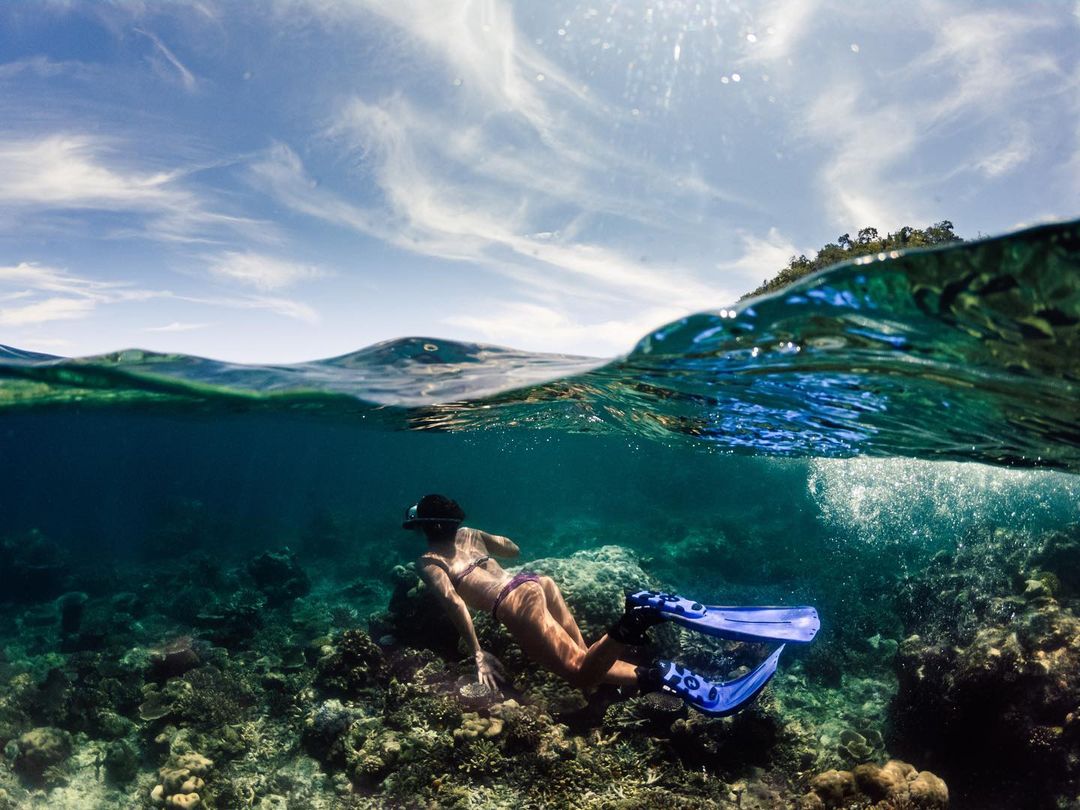Indonesia is known for its stunning underwater world, including diverse coral reefs. While snorkeling in Indonesia, you will have the opportunity to witness several different types of coral reefs. Each type is unique and offers a different experience for snorkelers. This article will explore the different types of coral reefs you can see while snorkeling in Indonesia.
Fringing Reefs
Fringing reefs are typical coral reefs in many tropical regions worldwide, commonly found when snorkeling in Indonesia seas. These reefs are located close to the shore and are connected to the land, often forming a border along the coastline. Fringing reefs are characterized by their shallow depth, making them easily accessible and popular among snorkelers and divers. The shallow water also makes it easier to observe the colorful marine life that inhabits the reef, such as tropical fish, sea turtles, and colorful corals.
Despite their popularity, fringing reefs are also vulnerable to damage from human activities such as pollution, overfishing, and tourism. Practicing responsible snorkeling and diving is important to preserve these delicate ecosystems for future generations. Climate change and ocean acidification also pose a significant threat to fringing reefs. Rising water temperatures and acidification can cause coral bleaching and other negative impacts on the reef ecosystem. As such, conservation efforts must be put in place to protect fringing reefs and the marine life that inhabits them.
Barrier Reefs
Barrier reefs are a type of coral reef that is separated from the shore by a lagoon. They are typically several kilometers long, more significant, and diverse than fringing reefs. Accumulated coral forms barrier reefs over time, often found in tropical waters. These reefs provide a habitat for diverse marine life, including fish, sea turtles, and sharks. Barrier reefs are a popular destination for snorkelers and divers due to their beauty and accessibility.

Atolls
Atolls are circular coral reefs that are surrounded by a lagoon. They are formed on submerged volcanic mountains that erode over time, leaving behind a ring-shaped reef. Atolls are unique and often home to diverse marine life, including sharks, rays, and sea turtles. They result from millions of years of geological activity and can be found in many places worldwide, including Indonesia. Atolls offer a fascinating opportunity for snorkelers and divers to explore and observe the wonders of the underwater world.
Like Also:
A Tour of Flores Island’s Stunning Landscapes
Raja Ampat Islands: A Photographer’s Paradise
Patch Reefs
Patch reefs are small and isolated coral reef systems scattered throughout the ocean. They are often found in shallow waters and can be as small as a few meters in diameter. Patch reefs are unique in that they are not connected to other reef systems and are often overlooked by snorkelers and divers. Despite their small size, patch reefs are home to diverse marine life, including colorful fish, crustaceans, and other invertebrates. These reefs play an essential role in the ecosystem, providing shelter and food for many species of marine life and contributing to the overall health of the ocean environment.
Table Reefs
Table reefs are flat, tabletop-shaped coral formations found in shallow waters, often in areas with strong currents. They are characterized by their flat, plateau-like shape, which makes them a unique and challenging snorkeling destination. Due to the strong currents, snorkelers must be experienced and comfortable in the water to explore these reefs. However, table reefs offer a unique and rewarding experience for those up for the challenge. Table reefs are home to diverse marine life, including colorful corals, schools of fish, and larger marine animals such as sharks and rays.
